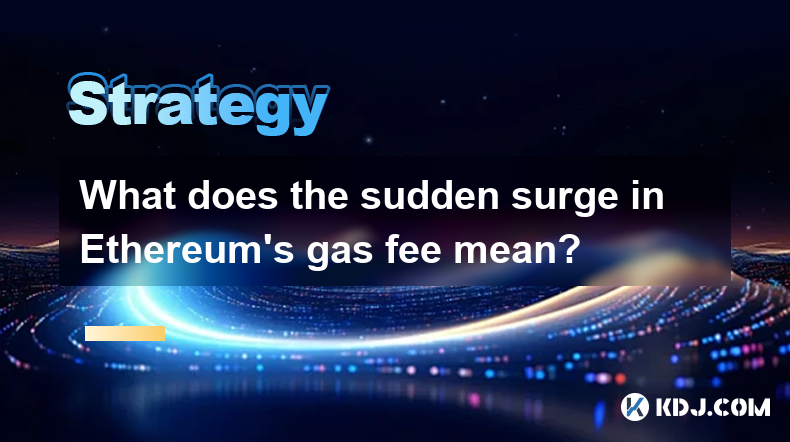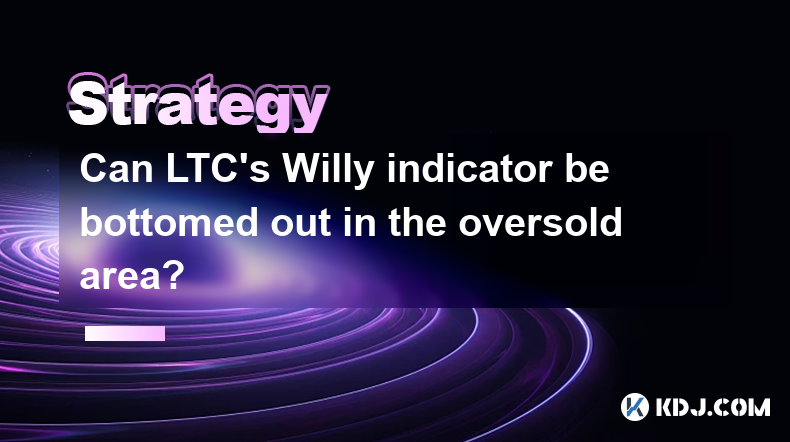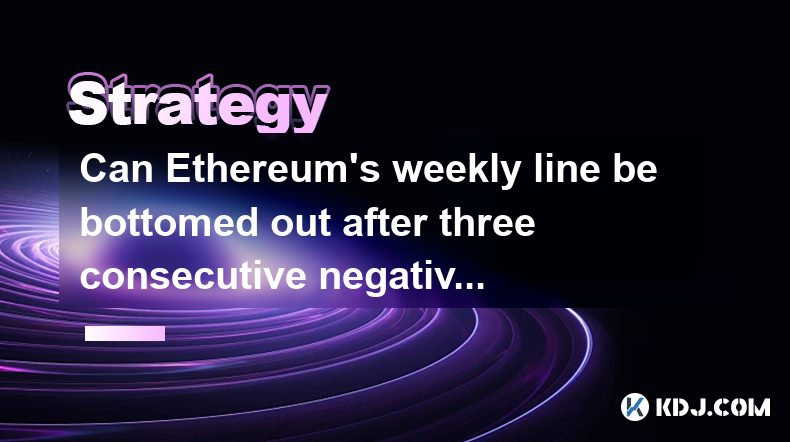-
 Bitcoin
Bitcoin $92,857.3496
-1.03% -
 Ethereum
Ethereum $1,750.4828
-2.45% -
 Tether USDt
Tether USDt $1.0005
0.05% -
 XRP
XRP $2.1885
-2.18% -
 BNB
BNB $597.4359
-1.69% -
 Solana
Solana $149.8729
-1.30% -
 USDC
USDC $1.0000
0.01% -
 Dogecoin
Dogecoin $0.1788
-0.25% -
 Cardano
Cardano $0.7255
3.02% -
 TRON
TRON $0.2464
0.28% -
 Sui
Sui $3.2757
10.22% -
 Chainlink
Chainlink $14.8489
-0.12% -
 Avalanche
Avalanche $22.0620
-1.11% -
 Stellar
Stellar $0.2755
2.43% -
 UNUS SED LEO
UNUS SED LEO $9.2218
1.65% -
 Toncoin
Toncoin $3.1533
-0.18% -
 Shiba Inu
Shiba Inu $0.0...01341
-1.13% -
 Hedera
Hedera $0.1856
1.66% -
 Bitcoin Cash
Bitcoin Cash $349.6685
-3.25% -
 Polkadot
Polkadot $4.1453
0.80% -
 Litecoin
Litecoin $82.8054
-1.43% -
 Hyperliquid
Hyperliquid $17.9889
-3.15% -
 Dai
Dai $1.0001
0.00% -
 Bitget Token
Bitget Token $4.4327
-1.75% -
 Ethena USDe
Ethena USDe $0.9995
0.02% -
 Pi
Pi $0.6476
-1.41% -
 Monero
Monero $227.9399
-0.28% -
 Uniswap
Uniswap $5.8086
-3.78% -
 Pepe
Pepe $0.0...08567
-4.18% -
 Aptos
Aptos $5.4495
1.50%
What does the sudden surge in Ethereum's gas fee mean?
Sudden Ethereum gas fee surges impact users and developers, deterring transactions and slowing dApp adoption; layer 2 solutions and EIPs aim to mitigate these effects.
Apr 24, 2025 at 12:07 pm

The sudden surge in Ethereum's gas fee has sparked significant interest and concern among cryptocurrency users and investors. Understanding the implications of this surge is crucial for anyone involved in the Ethereum ecosystem. Gas fees are payments made to miners for processing transactions and executing smart contracts on the Ethereum network. When these fees increase suddenly, it can have a variety of impacts on users, developers, and the overall health of the network.
What are Gas Fees and Why Do They Surge?
Gas fees on the Ethereum network are the costs associated with executing transactions or smart contracts. They are measured in "gas," a unit that represents the computational effort required to perform operations on the network. The price of gas is determined by the market, based on supply and demand dynamics. When there is a high demand for network usage, such as during periods of high transaction volume or when popular decentralized applications (dApps) are being heavily used, gas fees tend to surge.
Impact on Users and Transactions
For users, a sudden increase in gas fees can make transactions more expensive. This can deter users from making frequent transactions or using dApps that require multiple interactions with the blockchain. For example, if a user wants to swap tokens on a decentralized exchange (DEX), they might find that the gas fee is higher than the value of the tokens they wish to trade. This situation can lead to a decrease in overall network activity, as users seek alternatives with lower transaction costs.
Effects on Developers and dApps
Developers of dApps are also affected by surging gas fees. High gas fees can limit the functionality and usability of their applications, as users may be less willing to engage with dApps that are costly to use. This can slow down the development and adoption of new projects on the Ethereum network. Developers may need to optimize their smart contracts to reduce gas consumption, which can be a complex and time-consuming process.
Network Congestion and Scalability Issues
A surge in gas fees often indicates network congestion, where the demand for block space exceeds the supply. This congestion can lead to slower transaction times and a backlog of pending transactions. Ethereum's current architecture has scalability limitations, which become apparent during periods of high demand. The network can only process a limited number of transactions per second, leading to increased competition for block space and higher fees.
Market Dynamics and Speculation
Market dynamics and speculation can also contribute to sudden surges in gas fees. When there is significant hype around a new token launch or a popular dApp, users may rush to participate, driving up demand for transactions. Speculators might also engage in front-running, where they pay higher gas fees to have their transactions processed before others, further exacerbating the fee surge. These dynamics can create a feedback loop where higher fees attract more speculators, leading to even higher fees.
Strategies for Managing High Gas Fees
Users and developers have several strategies to manage high gas fees. One approach is to use gas price oracles, which provide real-time data on optimal gas prices. Users can set their transaction fees based on these recommendations to ensure their transactions are processed efficiently without overpaying. Another strategy is to use layer 2 scaling solutions, such as Optimism or Arbitrum, which process transactions off the main Ethereum chain and then settle them in batches, reducing the gas costs.
- Use gas price oracles: These tools help users determine the most cost-effective gas price for their transactions.
- Leverage layer 2 solutions: Platforms like Optimism and Arbitrum can significantly reduce gas fees by processing transactions off-chain.
- Batch transactions: Combining multiple transactions into a single operation can save on gas costs.
- Optimize smart contracts: Developers can refactor their code to minimize gas consumption, making their dApps more cost-effective for users.
The Role of Ethereum Improvement Proposals (EIPs)
Ethereum Improvement Proposals (EIPs) play a crucial role in addressing issues like high gas fees. EIPs are suggestions for improvements to the Ethereum protocol, and some are specifically designed to enhance network scalability and reduce gas costs. For example, EIP-1559, implemented in August 2021, introduced a new fee market mechanism that aims to make transaction fees more predictable and reduce the volatility of gas prices. While EIP-1559 has had a positive impact, ongoing efforts are needed to further improve the network's efficiency.
Case Studies: Real-World Impacts of Gas Fee Surges
Examining real-world examples can provide insight into the effects of gas fee surges. During the launch of popular NFT projects, such as CryptoPunks or Bored Ape Yacht Club, gas fees have skyrocketed due to intense demand. Users eager to mint new NFTs have been willing to pay exorbitant fees, leading to significant network congestion. Similarly, during the DeFi boom of 2020, gas fees reached unprecedented levels as users flocked to platforms like Uniswap and Compound, highlighting the need for better scalability solutions.
The Broader Ecosystem's Response
The broader cryptocurrency ecosystem has responded to Ethereum's gas fee issues in various ways. Some projects have migrated to alternative blockchains like Binance Smart Chain or Solana, which offer lower transaction fees and faster processing times. Others are working on Ethereum-compatible layer 2 solutions to alleviate the pressure on the main network. These responses reflect the ongoing evolution of the blockchain space as it seeks to balance scalability, security, and decentralization.
Frequently Asked Questions
Q: Can gas fees on Ethereum ever be completely eliminated?
A: While it is unlikely that gas fees can be completely eliminated, ongoing efforts to improve Ethereum's scalability and efficiency aim to reduce them significantly. Solutions like layer 2 scaling and protocol upgrades are making progress in this area.
Q: How do gas fees impact the environmental footprint of Ethereum?
A: Higher gas fees can lead to increased energy consumption, as more computational power is required to process transactions. Ethereum's transition to proof-of-stake with Ethereum 2.0 is expected to reduce its environmental impact, but gas fees remain a factor in the network's overall energy use.
Q: Are there any tools that can help predict gas fee surges?
A: Yes, several tools and platforms provide real-time data and predictions on gas fees. Services like EthGasStation and GasNow offer insights into current and projected gas prices, helping users plan their transactions more effectively.
Q: How do gas fee surges affect the adoption of decentralized finance (DeFi)?
A: High gas fees can hinder the adoption of DeFi by making transactions costly and less accessible to users. However, the development of layer 2 solutions and other scalability improvements is aimed at addressing these challenges and fostering greater DeFi adoption.
Disclaimer:info@kdj.com
The information provided is not trading advice. kdj.com does not assume any responsibility for any investments made based on the information provided in this article. Cryptocurrencies are highly volatile and it is highly recommended that you invest with caution after thorough research!
If you believe that the content used on this website infringes your copyright, please contact us immediately (info@kdj.com) and we will delete it promptly.
- How to Invest in Bitcoin According to Former Goldman Sachs Executive
- 2025-04-25 01:30:12
- JACKBIT Emerges as the Best Bitcoin Casino for 2025, Praised for Its No KYC Policy and Instant Withdrawals
- 2025-04-25 01:30:12
- ruya Becomes the First Islamic Bank to Offer Bitcoin and Virtual Asset Investments
- 2025-04-25 01:25:12
- Bitcoin reserves on cryptocurrency exchanges have dropped to their lowest level in more than six years
- 2025-04-25 01:25:12
- Bitcoin Soars : Satoshi Nakamoto’s Colossal Fortune
- 2025-04-25 01:20:12
- Don't Miss BTFD Coin's FINAL100 Bonus and $0.0002 Entry—Presale Ends May 26
- 2025-04-25 01:20:12
Related knowledge

Is the increase in LINK's net outflow from exchanges a positive signal?
Apr 24,2025 at 02:35pm
The recent increase in LINK's net outflow from exchanges has sparked discussions within the cryptocurrency community about its implications for the token's future performance. LINK, the native token of the Chainlink decentralized oracle network, has seen a notable shift in its net outflow from exchanges, which many interpret as a positive signal. This a...

Is LTC's UTXO age distribution useful for judging buying and selling points?
Apr 23,2025 at 05:42pm
Is LTC's UTXO age distribution useful for judging buying and selling points? Understanding the UTXO (Unspent Transaction Output) age distribution of Litecoin (LTC) can provide valuable insights into the behavior of its holders and potentially help in making informed decisions about buying and selling points. The UTXO age distribution refers to the age o...

Can LTC's Willy indicator be bottomed out in the oversold area?
Apr 24,2025 at 01:43pm
Understanding the Willy IndicatorThe Willy indicator, also known as the Willy ratio, is a technical analysis tool used in the cryptocurrency market to gauge the sentiment of a particular asset, in this case, Litecoin (LTC). It is calculated by dividing the total trading volume of an asset by its market capitalization. The resulting ratio helps traders u...

Can Ethereum's weekly line be bottomed out after three consecutive negatives?
Apr 24,2025 at 10:56am
In the dynamic world of cryptocurrencies, understanding market trends and patterns is crucial for investors and traders alike. One of the significant aspects of technical analysis in this field is the examination of weekly line charts, particularly for major cryptocurrencies like Ethereum. The question of whether Ethereum's weekly line can be bottomed o...

Where can I find the current average holding cost of XRP in the market?
Apr 22,2025 at 11:00pm
Where can I find the current average holding cost of XRP in the market? Finding the current average holding cost of XRP in the market can be a challenging task, as this information is not readily available on most mainstream cryptocurrency platforms. However, there are several methods and resources that you can use to estimate this figure. In this artic...

What should I do if LINK's NVT signal diverges?
Apr 24,2025 at 04:14am
When the NVT (Network Value to Transactions) signal for LINK (Chainlink) diverges, it can be a significant indicator for investors and traders to take action. The NVT ratio is a valuation metric used in the cryptocurrency space to assess whether a cryptocurrency is overvalued or undervalued based on its network activity. A divergence in the NVT signal s...

Is the increase in LINK's net outflow from exchanges a positive signal?
Apr 24,2025 at 02:35pm
The recent increase in LINK's net outflow from exchanges has sparked discussions within the cryptocurrency community about its implications for the token's future performance. LINK, the native token of the Chainlink decentralized oracle network, has seen a notable shift in its net outflow from exchanges, which many interpret as a positive signal. This a...

Is LTC's UTXO age distribution useful for judging buying and selling points?
Apr 23,2025 at 05:42pm
Is LTC's UTXO age distribution useful for judging buying and selling points? Understanding the UTXO (Unspent Transaction Output) age distribution of Litecoin (LTC) can provide valuable insights into the behavior of its holders and potentially help in making informed decisions about buying and selling points. The UTXO age distribution refers to the age o...

Can LTC's Willy indicator be bottomed out in the oversold area?
Apr 24,2025 at 01:43pm
Understanding the Willy IndicatorThe Willy indicator, also known as the Willy ratio, is a technical analysis tool used in the cryptocurrency market to gauge the sentiment of a particular asset, in this case, Litecoin (LTC). It is calculated by dividing the total trading volume of an asset by its market capitalization. The resulting ratio helps traders u...

Can Ethereum's weekly line be bottomed out after three consecutive negatives?
Apr 24,2025 at 10:56am
In the dynamic world of cryptocurrencies, understanding market trends and patterns is crucial for investors and traders alike. One of the significant aspects of technical analysis in this field is the examination of weekly line charts, particularly for major cryptocurrencies like Ethereum. The question of whether Ethereum's weekly line can be bottomed o...

Where can I find the current average holding cost of XRP in the market?
Apr 22,2025 at 11:00pm
Where can I find the current average holding cost of XRP in the market? Finding the current average holding cost of XRP in the market can be a challenging task, as this information is not readily available on most mainstream cryptocurrency platforms. However, there are several methods and resources that you can use to estimate this figure. In this artic...

What should I do if LINK's NVT signal diverges?
Apr 24,2025 at 04:14am
When the NVT (Network Value to Transactions) signal for LINK (Chainlink) diverges, it can be a significant indicator for investors and traders to take action. The NVT ratio is a valuation metric used in the cryptocurrency space to assess whether a cryptocurrency is overvalued or undervalued based on its network activity. A divergence in the NVT signal s...
See all articles























































































